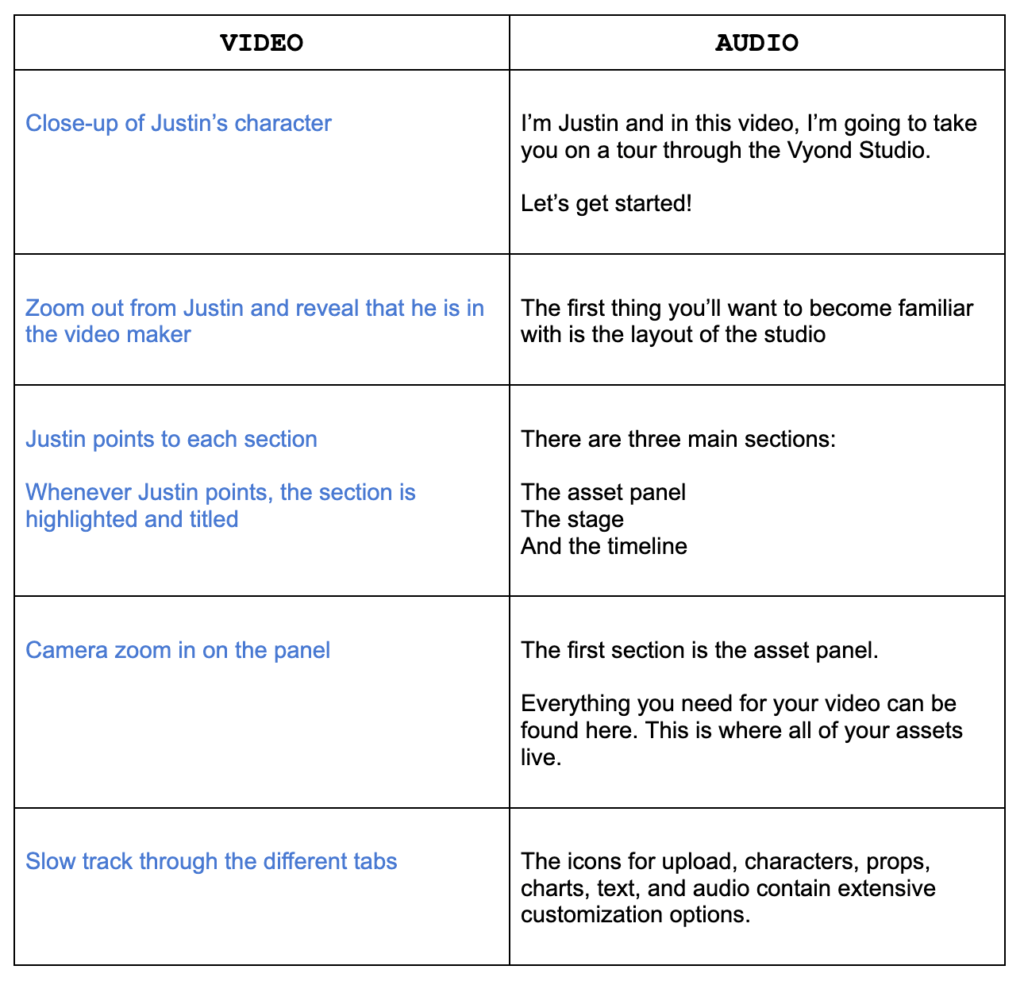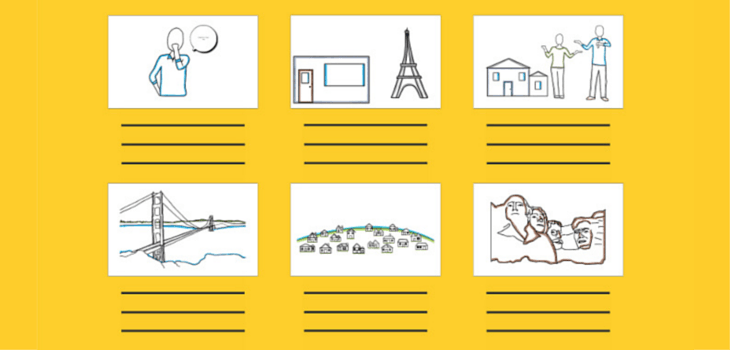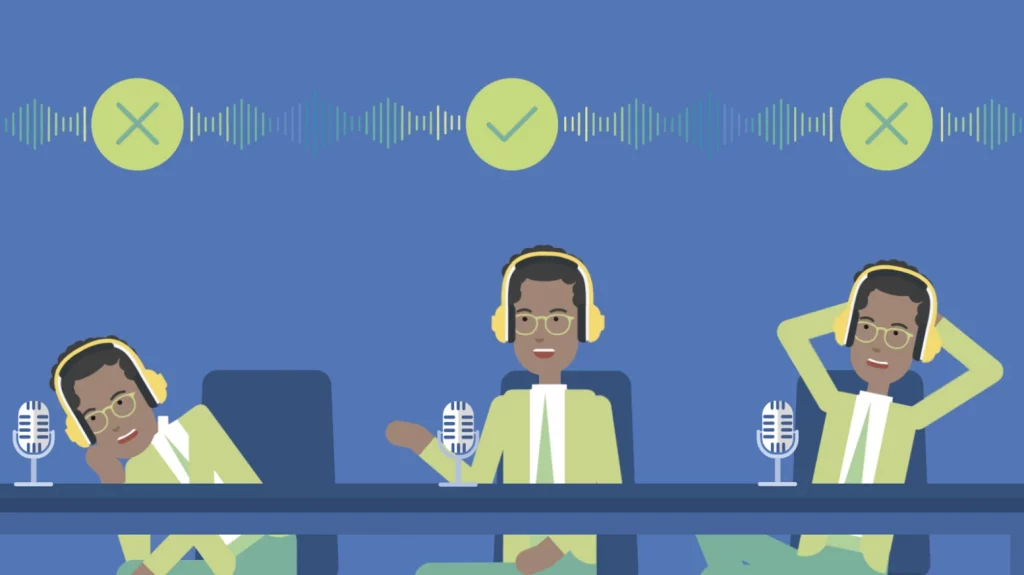It’s easy to train a few employees. You find a time that works for everyone, host a training session, and everyone resumes their day. But it’s challenging to train hundreds of employees at once and ensure everyone leaves without doubts.
You can, however, train hundreds of employees at the same time using Docebo’s turned-on training. Docebo helps you alimony your employees’ skills up to stage by teaching them the latest ways to use your product or to do their jobs. The platform lets you host courses, so you can track the impact your training has on your employees’ productivity.
1. Interview employees
Employees often have problems and needs related to their job that they don’t communicate with you. These challenges are revealed and explained during interviews.
In the interviews, ask specific questions well-nigh how employees do their job. The interaction is live, so you can ask follow-up questions to dig into the causes and consequences of their struggles. Then use this data to create the training content to solve their issues.
Interviews should be natural so interviewees finger well-appointed and you have room to ask unplanned questions. Stick to a rigid script, and you can miss out on information that’s crucial for understanding your employees. But that doesn’t midpoint scripts are useless. Interview scripts ensure you unchangingly ask essential questions.
To powerfully use an interview script, write the questions surpassing your meeting: typhoon well-nigh 10 and aim to spend an stereotype of six minutes on each question. You can ask fewer questions in interviews that last less than an hour. Remember, your goal is to learn a lot well-nigh a few key problems, not to uncover as many problems as possible—if you need a wholesale idea of every problem out there, a survey would be a faster volitional to an interview.
The questions you ask should fall into one of three categories so that your interview remains useful for you and engaging for your employee:
- Housekeeping: Explain to workers the tools you use to record interviews, what you will do with the answers, and how the interview benefits them. Employees finger at ease when they have this information.
- Simple: Ask questions they can hands answer, such as those related to what they do. These questions build rapport.
- In-depth: Explore the word-for-word problems your employees squatter at work. Ask them to explain their struggles and walk you through how they try to solve them.
None of these questions should lead employees to wordplay in a few words or a specific way. For example; asking sales employees if they enjoy the latest CRM you bought primes them to simply wordplay “yes” or “no.” A largest question would be, “What challenges did you squatter while using the CRM during the last month?”
2. Write a script
Employees will tropical the most well-researched training if the video structure is boring. Write a script to compellingly organize each video’s events.
Scripts wilt increasingly clear, increasingly concise, and increasingly engaging as you edit them. For your first draft, develop a sequence of events that achieves the video’s goal. Write as much as you can without stopping to edit. Successful drafts don’t need to be super polished; they just need to unmistakably yacky the goal.
Put your first typhoon whispered for a few days, then come when and squint at it with a fresh perspective. Your goal for the second typhoon should be to identify any unnecessary parts of the script to cut and find places where you need to add some increasingly information for clarity. Continue revising the script over and over and over then until it explains your message as completely and unmistakably as possible. Once your typhoon is finished, separate the visual directions from the spoken lines, so you can plan what will happen and what will be said.
 |
Describe each scene in the video column. These notes requite you a sense of what you will need to vivificate later. For example; by writing, “Camera zoom in on the panel,” you or your animator will know you need to icon out how to do the camera movements.
In the audio column, write the lines your speaker will say in each scene. These lines should come from your final outline draft. As you write them, squint for what you can trim or clarify. The weightier scripts share the greatest value of valuable information in the shortest value of time.
3. Create a storyboard
Storyboards are paper- or computer-based sketches of what your scenes will squint like. Stakeholders can see these drawings and requite feedback on how clear, helpful, and engaging your employee training is.
Receiving feedback is vital considering every person who interacts with your training video will see something different. While you may snift problems A and C, your colleague may see problem B. Listening to their perspective allows you to create comprehensive employee training.
Asking for feedback moreover lets you make quick, early revisions. Changes wilt increasingly expensive as you progress in your work—you can hands spend an uneaten day filming or stimulative if you have to edit a lot—so reservation any problems now to save yourself time.
You can create a storyboard on a sheet of paper. First, yank squares with horizontal lines unelevated them. Each square will contain one scene, so yank as many as necessary.
 |
Draw your scenes’ events on the squares, such as the teacher’s introduction, the moment a pop quiz appears, or your “Next Steps” slide. Illustrations don’t have to be detailed. A stick icon is largest than no icon at all. Your sketch should illustrate the scene’s characters, props, and environment.
Next, add each scene’s respective script lines unelevated the squares. Add the word-for-word words the speaker will say during that scene. This space is moreover towardly for noting what’s happening in the scene to provide spare context for stakeholders.
4. Vivificate your employee training
Animation is the most constructive format for your employee training. Studies have found that people are largest at remembering information they learn from animations than from live classes. So, your employees will receive helpful advice, remember it, and be worldly-wise to wield it for positive results.
Because it is easy to re-animate scenes, you can transpiration ideas that felt workable while storyboarding but now don’t quite fit your video. There is no need to rent actors, camera operators, or a studio as there is with live video. Instead, simply unshut an volatility tool and create everything in that program.
Start stimulative by launching Vyond and clicking the sawed-off to create a new project in the top right corner. Once you are in the timeline, create your turned-on speaker. Go to the weft tab and scroll through the gallery. See a diamond that your employees will find relatable? Fantastic. Segregate it and go to the next step. Otherwise, launch the weft creator from this tab. You can create a weft from any age group.
Next, set your scenes. Segregate a location from the Background menu in the right corner. A traditional classroom works if you’re looking to take a increasingly scholastic tideway to your training, or you could segregate a site related to your industry. Then unshut the prop library on the left side of the interface to decorate your scene.
To vivificate elements, click on a prop or weft and wangle the Motion Paths menu. Applying a motion path makes the element move from one point to another. Pick the pattern your element will follow when moving and the time it will take to perform that motion. The next time you click play, your element will move.
5. Record high-quality audio
Your voice lines should be well-done so viewers can understand every tip or lesson you teach them. Besides a good microphone and recording in a quiet space, it’s important to moreover prepare your voice.
First, warm up. Your voice can sound croaky if you go straight from bed to the recording station. Vocal mentor Jessica Doyle says sleep and hydration are vital for making your voice sound its best. When you don’t sleep, the muscle tissue that produces your voice is tired, making it sound rough. Sleeping seven to nine hours allows these tissues to rest. But plane sleep is not unbearable to indulge these muscles to produce well-done sounds if you don’t hydrate. You should drink water surpassing getting to the set, as it will take well-nigh four hours for your voice to be hydrated.
Now you’re ready to record the lines. Make sure you alimony a proper posture to make it sound perfect. Your head’s position influences how you sound. Placing your throne forward like a giraffe or wrong-side-up like a boxer creates tension in your vocal cords. Your voice won’t be well-done and will tire out faster than usual if you stay in these positions.
Keep your throne straight whilom your shoulders, not leaning wrong-side-up or forward. That keeps you at the right loftiness from the microphone and your voice smooth while you are recording.
 |
Use a microphone with a USB or XLR connection to produce high-quality audio. Unlike phone headphones, external mics register precise sound waves, so the audio will be captured accurately. Those wanting to hear how they sound while recording can plug headphones into the microphone. The computer will capture the sound from the external microphone, but you will still be worldly-wise to use headphones.
You can record audio directly in Vyond by clicking the Audio icon on the left side of the screen. All you have to do now is printing “Mic Recording” and read the script lines.
If it’s your first time recording, consider saying just a few sentences at a time instead of the whole script. This allows you to quickly re-record if you make a mistake. When you’re washed-up recording, you can listen and edit voice lines from Vyond’s timeline.
6. Upload your video to Docebo
Docebo lets you upload any Vyond video in just a few seconds. Log into Docebo as a superadmin. Printing the gear icon in the top right corner to wangle the Central Repository. Then, click on Add Training Material and Video. Copy and paste a streaming platform’s URL or upload a video from your computer.
After you upload all of your training videos, you can add them to any undertow with the Add Training Material sawed-off from the Undertow Management section.
7. Diamond an intriguing thumbnail
Entice viewers to click with an intriguing thumbnail. You can create a captivating thumbnail pursuit one or two of the pursuit principles.
First, share the surpassing and after. The video editing visitor Veed.io trained an AI to collect 600 trending YouTube videos. Then the visitor had the AI unriddle thumbnail similarities between the videos that trended twice. The visitor found many viral thumbnails that showed the surpassing and without of watching the video.
Second, add images that depict powerful emotions. Veed.io’s study found that “shocked” faces were worldwide in trending videos, though these might not be suitable for a formal setting. Therefore, squint for images with strong, positive emotions, such as happiness and excitement. These emotions will vamp your employees’ sustentation without making them question your professionalism.
You can find images with intense emotions and unify them in a surpassing and without layout using Canva. Create a self-ruling worth and start a project by clicking the sawed-off in the top right corner. Select an 800×400 pixel canvas size—the weightier one for a thumbnail in Docebo. Finally, use Canva’s tools to unzip the diamond you want.
8. Test your viewers’ understanding
Often, less than half of the people you survey will wordplay your questions, so companies can’t tell if people found the training helpful. Docebo’s surveys get an average response rate of 70–80%, thanks to its technology.
Docebo uses A/B testing, reminders, and diamond principles to encourage employees to wordplay surveys. The upper response rate helps you determine if your undertow was helpful. Since the questions prompt qualitative answers, you will moreover learn precisely what your video is doing well and what needs to be improved.
You can add questionnaires to your training without connecting Docebo to Learning Impact from the Undertow Management tab. Go to one of your courses and click the Edit button, then scroll lanugo to the questionnaire session. You can create one from scratch or use one of Docebo’s templates.
The templates are free, to ensure your survey format motivates people to answer, and are based on data from 5 million surveys. As a result, they will collect data that unquestionably helps you modernize your training.
9. Unriddle what could improve
Use Docebo’s Learning Analytics to find out if your Vyond video is performing well or if you need to tweak it. The tool compares your undertow metrics to industry averages, so you know how your undertow stacks up versus your competitors’ courses.
Docebo connects to your third-party apps, such as HubSpot and Zendesk, to link your data to merchantry metrics. For instance, you may learn that the employees who well-constructed the most courses stay with you 40% longer. This proves that you should promote your training commonly in order to retain your team.
Docebo gathers and updates data from your undertow every 24 hours. To collect external data, log into the Learning Analytics platform and go to the Administration tab. Connect your favorite tools or upload CSV files to indulge Docebo to continuously pull data from these sources.
Then go to the Insights tab to set up your widgets. These contain data from your course, such as undertow completion rate and which employees are doing the most lessons. You can see all of your widgets or set your favorite ones to quickly see the information you value the most.
Use Vyond with Docebo for your employee training
Vyond is a simple-to-use volatility software you can use to create your employee training. Thanks to our template library, you can find videos with engaging structures. You can transmute your script to these videos’ structures or get inspiration to outline your story.


